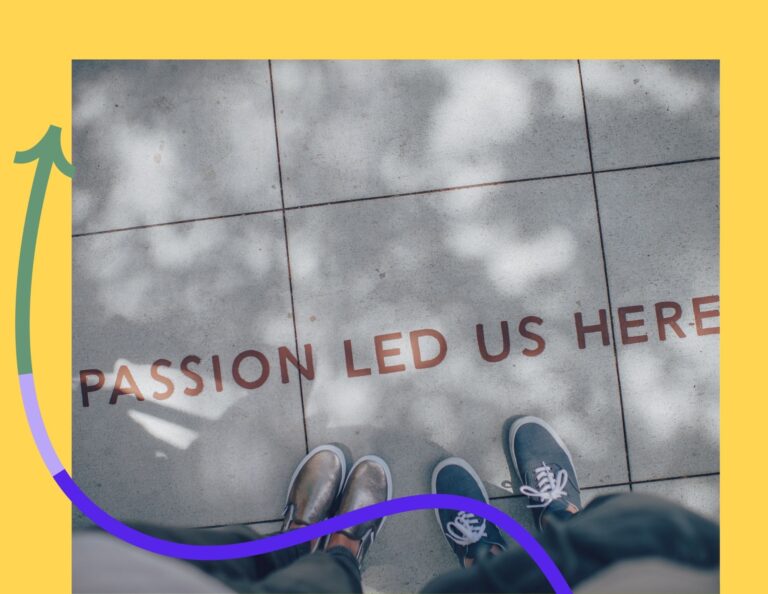Marina Warner of The Warner Firm (@thewarnerfirm) is a lawyer for creatives in NYC.
Megan Elizabeth of Art by Megan (@artbymegan) is a painter + illustrator in NYC.
An issue that has become the “elephant in the room” recently within the creative industry is that of copying or imitation. The definition of “copying” has become updated, skewed, transformed, undone and redefined in a way never seen before because of the power of social media. It’s time to have a real, Brooklyn-real, discussion about how to prevent the issue from happening to you and how to protect your business as a creative entrepreneur.
We have decided to write this article from two perspectives: the artist and the legal expert in order to show the varying angles on the issue and offer the most comprehensive view possible.
In his book, “Steal Like an Artist”, Austin Kleon writes, “Nothing is original”. He then continues to define what he considers to be “Good theft” and “Bad theft”. The book is totally worth reading and offers a great, refreshing perspective on the issue. However, it raises the important question, “have artists (or all “creatives”) always been doing this?. Is it “not that big of a deal”?
THE ARTIST’S PERSPECTIVE: (Megan)
Recently, I had an unfortunate experience of discovering that an artist was creating exact copies of some of my paintings. Every slight detail of my abstract work was captured in the exact medium and style of my work. I was devastated.
I reached out to other artists, my friends, family members, Tuesdays Together buddies, and my lawyer friends to see what I should do.
There were SUCH a variety of answers that it was astounding. The overwhelming comment was “Well, YOU KNOW, IMITATION IS THE BEST FORM OF FLATTERY”.
At one point I was so frustrated and upset that someone would say this to me that I burst into tears and just hung up the phone. I was also told “Well, this happens all of the time, so there is not really anything that can be done about it”. I couldn’t believe it.
No one in the creative world should be made to feel like this.
Anyone who knows me knows that those answers didn’t “cut the mustard”, as my grandmother used to say. If you draw as a little girl every day, study for art for years, finally get a chance to follow your passion, work 80-90 hour weeks, fight harder than you have ever fought for anything in your life and finally become a full-time artist, you deserve to feel protected, respected and valued.
Instead, I felt alone and completely helpless.
So, what options does a creative have when or if this happens?
Ok, so let’s break it down for you a little here. Here are some examples and terminology to help!
Inspiration vs. Copyright infringement:
For ages, artists, creatives and makers have been influenced by one another. Famous schools of artists from the impressionists to cubists “borrowed” ideas from one another in order to create, hone and perfect their own style. So, is being inspired by another artist necessarily a big deal? Is it copying if you unintentionally or accidentally adopt another’s style while on your own creative journey?
The nuances: “Copying or Stealing”
What is copying? Is it subconscious? Does it happen to creatives who are so visual by nature and who accidentally see the world through another’s eyes? Does it happen because someone studies the world of other artists because they find them to be wonderful and inspirational? Is there always an aggressive or purposeful intention when someone copies? No. Not always. But this is where things get a little “fuzzy”.
THE LAWYER’S TAKE: (Marina)
Copying in the creative industry is an issue that my clients deal with all too often. As the world grows increasingly interconnected, artists are able to share their work with a wider audience and gain exposure at a more rapid pace. One of the pitfalls that come with this attention, however, is the heightened likelihood of someone using or copying your work without permission. While exposure is valuable in its own way, it won’t pay your rent. When someone, whether it be a fellow artist, corporate conglomerate, or unassuming Instagram user, reaps benefits from your work without your permission, emotions can understably run high.
While the law does allow one to copy ideas (for example, no one has a monopoly on painting landscapes or taking photos of babies), it draws the line at copying of expressions of those ideas (there are many different ways for artists to depict a sunset). When the realization of a concept is copied, the law defines this as copyright infringement. Luckily, artists have options at their disposal for such behavior.
The legal perspective on copying:
What is a copyright?
A copyright is a bundle of exclusive rights in an original work of expression given to the author of that work. These exclusive rights include the rights to (1) make copies of, (2) make derivatives of, (3) distribute copies of, (4) display, and (5) perform the work, as well as grant these rights to others. Copyright is only granted to creative works, such as literary, dramatic, musical, architectural, pictorial, graphic, and audiovisual works. For works created after January 1, 1978, these rights are granted to a copyright holder for the life of the author plus 70 years.
What is copyright infringement?
Copyright infringement, then, is when someone who is not the rights holder takes advantage of any of the above-mentioned exclusive rights without permission from the
holder. In order to prove infringement, a rights holder must show that (1) it has a valid copyright and and (2) that the alleged infringer illegally copied the work (usually shown by proving that the other party had access to your work and that there is substantial similarity between your work and theirs).
How can you battle copyright infringement?
Unfortunately, there is no foolproof way to prevent all instances of copying. The below tips, however, are helpful in decreasing its occurrence.
-
Register your work with the U.S. Copyright Office. Because copyright protection attaches as soon as a work is “fixed in a tangible medium of expression” (i.e. when you write down your idea for a story or actually take a photograph of your subject), registration is not required. In addition to putting possible infringers on notice that you own the rights in your work, registration is valuable because it also grants:
-
The ability to sue an infringer in court
-
The ability to get statutory damages and attorney’s fees, ranging from $750 to
$30,000 per infringement (penalty for an unregistered work is actual damages,
which are extremely difficult to prove)
-
Evidence of copyright ownership
-
Validity of copyright
-
-
Put a copyright notice on your website and or social media profile making it clear that you own and reserve all rights in your original content. If you want to allow others to copy or republish your work, you can include rules for doing so in your site’s copyright policy.
-
Use Google Reverse Image search to see where else your work may appear online (I like to think of this as the “Catfish technique”)
-
Disable the “right click” feature on your site
-
Use invisible watermarks
What can you do if you suspect that you are a victim of copying?
1. Cease and desist letter:
If you suspect that someone has copied your work, you can send them a cease and desist letter or a DMCA takedown notice. A cease and desist letter is a legal warning sent to someone informing them of their illegal activity, and demands that they “cease and desist” from continuing to engage in such activity. In some situations, the letter may also warn that if the behavior doesn’t stop by a certain date, the sender of the letter may take further legal action, including filing a lawsuit. While a cease and desist letter may be sent without hiring a lawyer, a letter containing legal language, on law firm letterhead, and signed by an attorney sometimes proves to be more effective.
2. DMCA takedown notice:
If you find your work being infringed online, you can send a DMCA Takedown Notice. A DMCA notice is a message sent to an online service provider informing them that they are hosting or promoting infringing content online, and asks them to “take down” the content. The notice must contain the following elements:
-
Identification of the infringing work
-
Identification of the infringed work
-
Contact information of the copyright holder
-
Statement from you that you have a “good faith” belief that the work is indeed infringing
-
Electronic or physical signature that you are the copyright holder, or are authorized to act on behalf of the copyright holder
*Social Media:
Social media sites like Facebook, Instagram, Tumblr and Twitter have pre-set forms that make it easier to file a notice. Many websites have contact information for their DMCA agent, the person responsible for handling such notices, in their terms of service or copyright policies. Upon receiving these notices, OSPs are required to act quickly to remove the content.
What is “Fair Use”?
When assessing potential copying, consider whether the unauthorized use could fall under “fair use.” Fair use is a copyright infringement defense, and is defined as copying that is done in a limited manner that transforms the original work and is for purposes such as news, commentary, education, or parody.
In closing…
THE ARTIST:
You are not alone.
There are wonderful people (lawyers!) out there who can help you to protect your business.
The majority of people respect your work and would never intentionally hurt you or your business, but it’s best to be prepared by making the right decisions to protect your
work. Following the advice of Marina, I have become much more confident in the choices I am making for my business.
Something I am learning, partially by meeting the amazing people at TuesdaysTogether NYC meetings, and partially because I tend to learn in a “trial by fire” approach is that researching, doing what seems challenging and scary, or working outside of your comfort zone as a small business owner or entrepreneur is part of the job. It’s completely unavoidable. However, with a little trust in friends and whole lot of patience, things always work out for the nice guys (and gals).
THE LAWYER:
Thinking about legal issues that may come up in business can seem daunting and scary, but it does not have to be. By educating yourself, working with a knowledgeable attorney, and taking advantage of legal tools available to you, you can be ready to protect yourself. And you should- -your talent is worth too much not to!
Attorney disclaimer: Statements made in this article by Marina Warner are for educational purposes only. They do not constitute legal advice, nor are there any attorney-client relationships formed by this article or any comments to this article.
Additional Resources:



